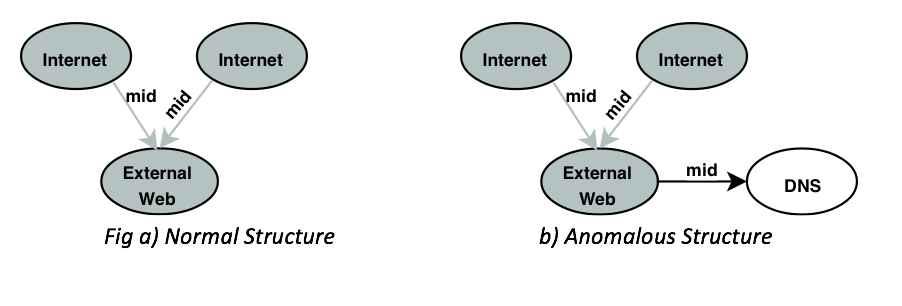Detecting the Onset of a Network Layer DoS Attack
A denial-of-service (DoS) attack is a malicious act with the goal of interrupting the access to a computer network. The result of this type of attack can cause the computers on the network to squander their resources to serve illegitimate requests that result in a disruption of the network’s services to legitimate users. With a sophisticated DoS attack, it becomes difficult to distinguish malicious requests from legitimate requests. Since a network layer DoS attack can cause interruptions to a network while causing collateral damage, it is vital to understand the measures to mitigate against such attacks. Generally, approaches that implement distribution charts based on statistical analysis or honeypots have been applied to detect a DoS attack. However, this is usually too late, as the damage is already done. We hypothesize in this work that a graph-based approach can provide the capability to identify a DoS attack at its inception. A graph-based approach will also allow us to not only focus on anomalies within an entity (like a computer), but also allow us to analyze the anomalies that exist in an entity’s relationship with other entities, thus providing a rich source of contextual analysis. We demonstrate our proposed approach using a publicly-available data set.
In this research, the early detection of the anomaly was possible because the graph-based approach was able to represent the direct repercussions of the attack (e.g., calls to the DNS servers by the external web server). As we know, the goal of a network DoS attack is to create bogus return addresses, causing the network to squander its resources, thus preventing access to legitimate users. Since the local web server does not know the bogus return address associated with the packets sent by the DoS attack, the web servers must perform a DNS query. This resulted in the change in the graph structure between the entities in the network. In this particular scenario, the new relationship between the external web and the DNS was created which was represented as a new node “DNS” hanging off “external web”. Therefore, a graph based approach represented the direct repercussions of the DoS attack and discovered a potential DoS attack in its early stages. The first known anomaly was reported within 5 seconds of the DoS attack inception. Also, we were able to identify all five IPs from which the DoS attack was instigated to the external web server.
The unusual behavior of the web server was marked as an anomaly by GBAD which helped to flag the DoS attack at its inception. Also, it should be noted that every anomaly reported by GBAD is related to the DoS attack. Thus, there are not any false positives (see confusion matrix in Table below). While a nice feature of what was performed here, we know that it should not be taken as a standard for applying a graph-based approach, and potentially another dataset might have produced false positives (something we plan to investigate in the future).
For further detail, please refer the paper published in FLAIRS-2019 Conference.


